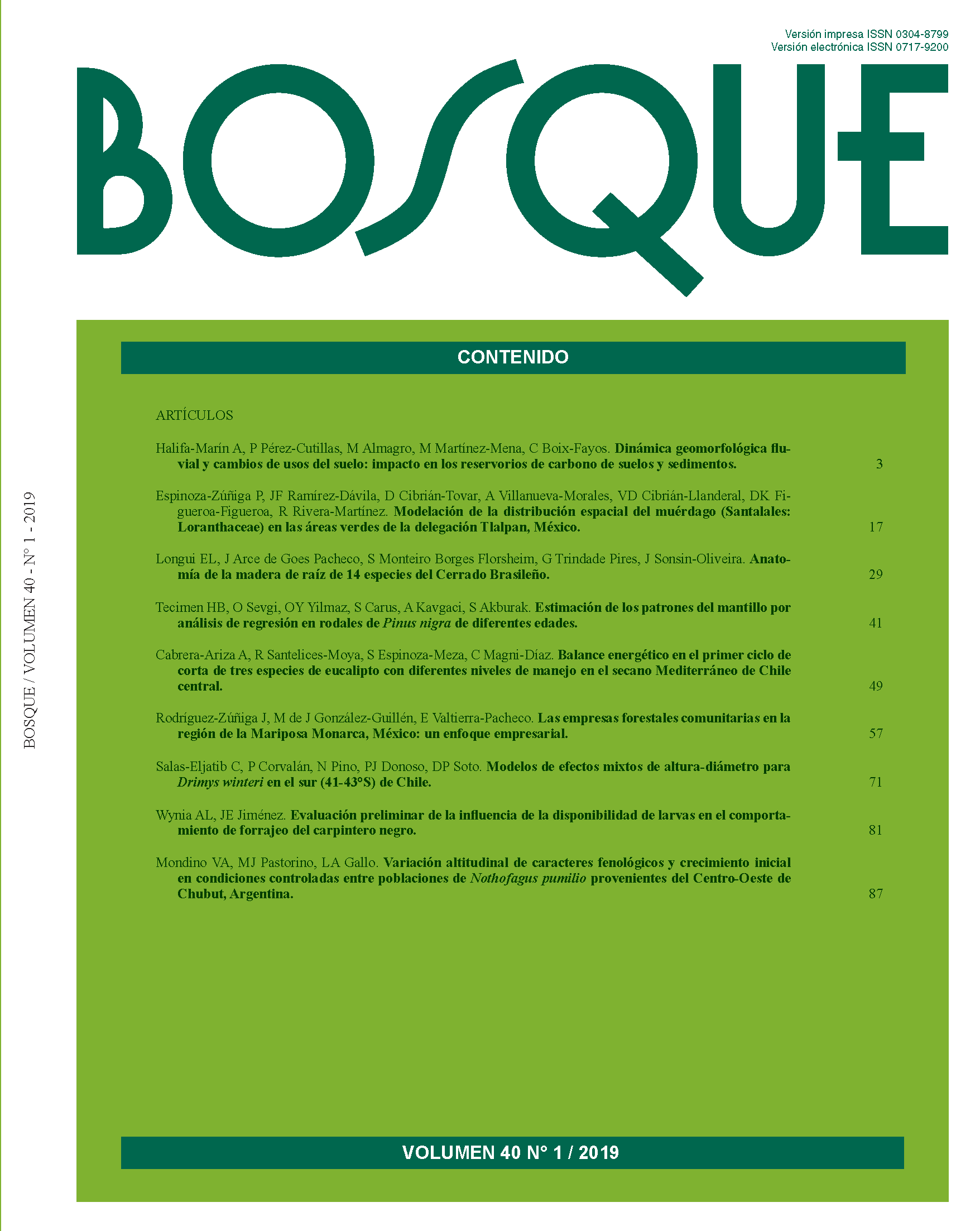Modeling the spatial distribution of true mistletoe (Santalales: Loranthaceae) in the green areas of Tlalpan, Mexico Delegation
Main Article Content
Abstract
The objective of the present investigation was to model the spatial distribution of true mistletoe (Cladocolea loniceroides, Santalales: Loranthaceae) through the use of classical statistics, spatial statistics, geostatistics and generate maps showing the aggregations of this organism in the green areas of Tlalpan Delegation, Mexico City. A total of 40 sampling sites were evaluated, of which 12 presented mistletoe. With the use of Geostatistics, the spatial pattern of the mistletoe was modeled, experimental semivariograms were obtained and maps of aggregation of this pest and infested surface were generated. The results generated with the Spatial and Geostatistics presented an aggregate spatial structure. In contrast, the use of classical statistics did not yield congruent results and the spatial distribution of mistletoe could not be modeled with this method. The species of tree, surface of cups and general state of hosts, as well as plantation designs, seem to play an important role in the autocorrelation of the mistletoe-tree; with the distribution maps, the most infested areas could be determined and the different points of aggregation could be observed. The obtained information will allow better planning in the selection of the species to be planted, improving tree densities and coordinating management plans directed at the areas most affected by these pathogenic organisms.

